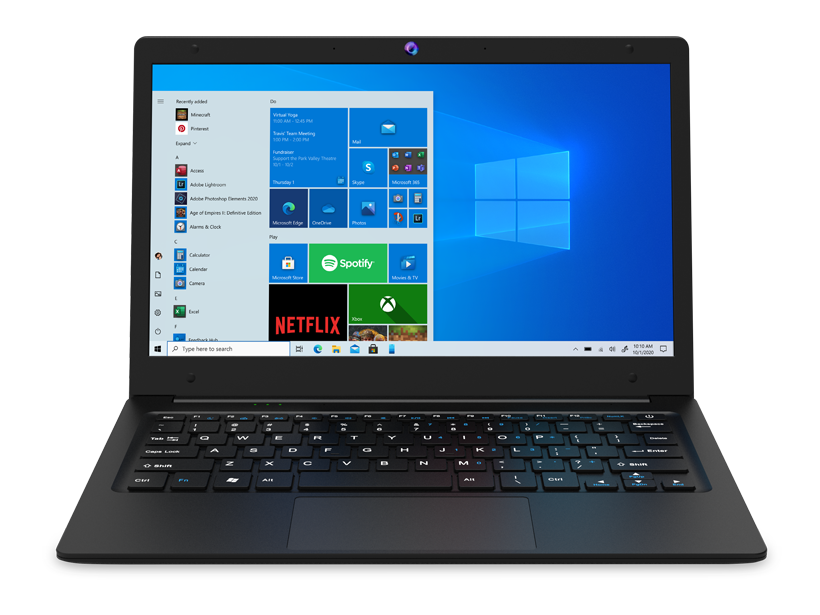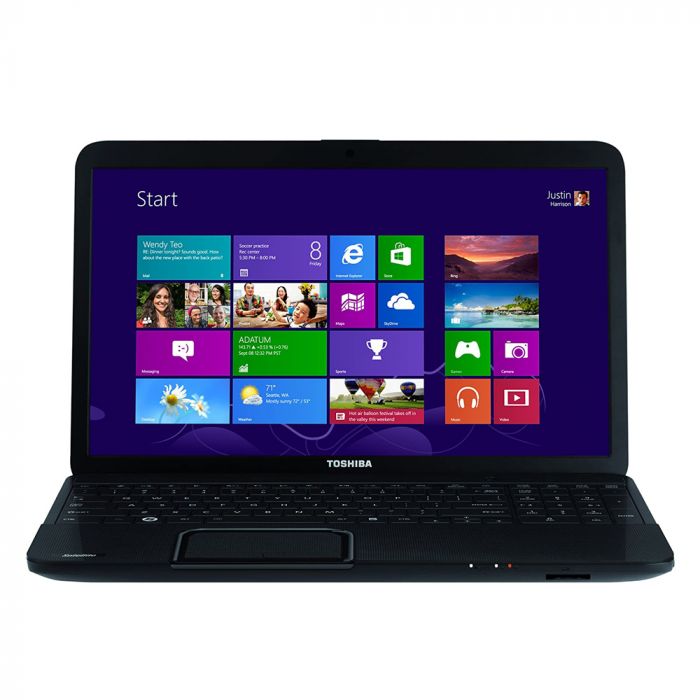Laptops under $150
Laptops under $150 are typically low-end, basic models designed for simple tasks such as web browsing, document editing, and email. They usually have smaller screens, low-end processors, limited RAM, and minimal storage capacity. These laptops are suitable for basic computing needs and are ideal for students, casual users, and those on a tight budget. However, they may not be suitable for more demanding tasks such as gaming, video editing, or running multiple applications simultaneously.
IOTA FLO – $124


The Iota Flo lives up to its name by constantly fluctuating in price over weeks. Despite purchasing it for £120 plus next-day delivery fee of £5.32, its price rose to £180 before dropping back to £120. While it ships with Windows 11, which is its killer feature, I wouldn’t recommend it at £180 unless you’re in dire need of it.
Despite having a Celeron N4020 processor with only two cores, it proved to be the fastest among new laptops in 2019. However, it doesn’t feel particularly swift, but it has enough power to keep Windows 11 running, even with the standard 4GB of memory. The built-in graphics are slower than other laptops, but it’s not suitable for gaming.
The keyboard and 11.6-inch screen are weak points of the Iota Flo. Although the resolution is excellent at 1920 x 1080 and a peak brightness of 254cd/m2, the contrast ratio of 376:1 is inadequate, and the accuracy is poor. Its keyboard lacks cushioning, resulting in a clattering and hollow feel with each keystroke. However, the touchpad is satisfactory, and the 720p camera is suitable for video calls.
The ports are basic, with one USB-A port on either side, a mini HDMI output for external screens, a microSD card slot to add storage to the 64GB eMMC drive, a 3.5mm jack, and a DC input. The compact power supply weighs only 130g, and the Iota Flo weighs 1.02kg. It performed well in battery tests, with 10 hours and 5 minutes of idling time and 6 hours and 35 minutes of video playback. However, it takes three hours to reach 94% during charging.
While the Iota Flo has the potential for many years of supported life with Windows 11 on board, it’s disappointing that Iota paid little attention to the screen and keyboard. Other laptops in the same price range offer better quality.
The keyboard on the Iota Flo lacks cushioning, resulting in a noisy and hollow feel with every keystroke. However, the touchpad is adequate, and the 720p camera is sufficient for video calls. The laptop’s ports are basic, featuring a USB-A port on each side, a mini HDMI output for external displays, a microSD card slot for additional storage, a 3.5mm jack, and a DC input. The compact power supply weighs just 130g, and the Iota Flo weighs 1.02kg. Despite performing well in battery tests, lasting 10 hours and 5 minutes while idling but dropping to 6 hours and 35 minutes when playing video, it took three hours to recharge up to 94%. It’s unfortunate that Iota didn’t pay more attention to the keyboard and screen, as the Flo has the potential for many years of use with Windows 11 installed.
TOSHIBA SATELLITE PRO C850-1HD PRICE $103


The phrase “they don’t make them like that any more” is typically used to reference sturdy machinery from the past, but in this instance, I say it with appreciation. The Satellite Pro C850-1HD, which originated in 2013, is a traditional and bulky business laptop from a bygone era that I’m glad has mostly passed. I purchased it for £99 to provide a direct comparison to current laptops, and the difference can be summarized in one sentence: much more powerful, much less portable, and much more battered. Let’s examine power first. My machine was equipped with a Core i5-3230M processor, which was a robust chip for its time, with two cores, four threads, and a peak frequency of 3.2GHz. With 8GB of supporting memory, it outperformed the mini laptops in nearly every aspect. The only drawback is its integrated graphics chip, Intel’s HD Graphics 4000, which does not support OpenGL 4.3, preventing it from running the digital content creation portion of PCMark 10. While it performed better than its rivals in 3DMark Fire Strike, I still wouldn’t want to use this laptop for gaming.
Moving on to portability, it weighs 2.2kg, which is twice the weight of the other laptops in this category, and its footprint is almost big enough to hold two of them. Let’s not forget its height of 33.5mm. Furthermore, the battery’s capacity has deteriorated to one-third of its original value, with 18Wh compared to the original 49.5Wh. In our light-use benchmarks, it lasted just over an hour.
One of the advantages of this laptop compared to modern ones is how easy it is to upgrade. Flipping over the Satellite Pro reveals a scratched underside that reflects the machine’s long life, but there’s also a user-removable door that houses two SODIMM sockets. The battery is even simpler to replace, with just a catch to keep it in place, and you can still purchase one for around £35.
Another retro feature is the DVD writer on the left side, with a USB 2 port for company. On the right side, you’ll discover two additional USB-A ports, an Ethernet port, and two video connectors: one D-SUB and one HDMI. If you appreciate good screens, you’ll want to take advantage of these ports since the 1,366 x 768 15.6in panel is terrible. It covers a respectable 68% of the sRGB color space, and its color accuracy is average, with an average Delta E of 3.36, but it’s let down by a dreadful contrast ratio of 239:1. Light greys nearly blend in with whites.
The keyboard is another poor aspect of this laptop, with a squishy feel that no one will enjoy typing on. Strangely, the trackpad has the same mottled texture as the rest of the palmrest, which took some getting used to. It’s small but functional, and it’s nice to have physical left- and right-click buttons once again.
Machines like this still have a place – a network-connected device with a DVD writer and a fair amount of power – but its days are numbered because it cannot be upgraded to Windows 11.
VENTURER EUROPA PLUS 11


The Venturer has a nostalgic feel reminiscent of older models like the HP Jornada and Psion Series 5 due to its reduced-size keys that require some adjustment before typing at normal speeds. However, the cushioning on the keys is adequate and provides a more comfortable typing experience than the clackety Coda and Iota laptops. The palmrest is generously wide but unfortunately placed where the base of the thumbs brush against it while typing, making palm rejection ineffective. Disabling the palmrest requires pressing the Fn key together with the Esc key.
The Venturer’s port placement at the rear of the laptop is a throwback to older models and is great for desk use, as it avoids cable clutter on the sides. It also has a full-size HDMI port and two USB-A ports, a 3.5mm jack, and a DC input. At 1.02kg, it is the second lightest laptop and feels robust enough for life on the move. However, its 24Wh battery provides only around five hours of battery life in light-use and video-rundown tests, which is disappointing.
Although not the speediest laptop, the Venturer performs well in benchmark tests due to its Celeron N4000 processor. Despite the processor’s two-core chip dating back to 2017, the Venturer qualifies for a free upgrade to Windows 11, adding several years to its supported lifespan. The Europa’s 11-inch panel covers 83% of the sRGB space with an average Delta E of 1.49, making it one of the best in its price range.
Overall, the Venturer is a terrific laptop for its price, with the only real downside being its battery life. If you can live with five hours of battery life, it’s an excellent choice for a budget laptop.
















